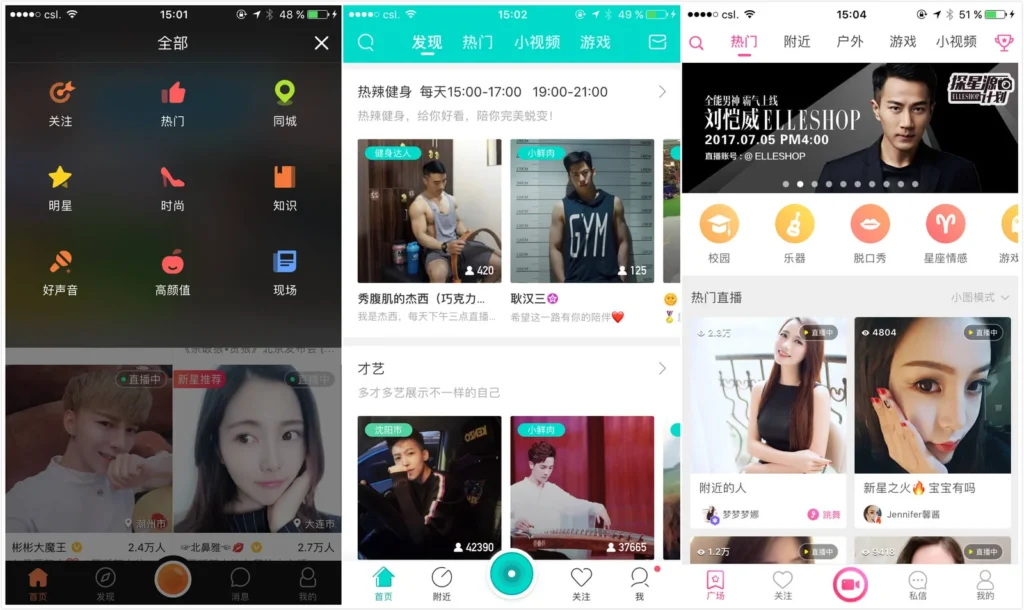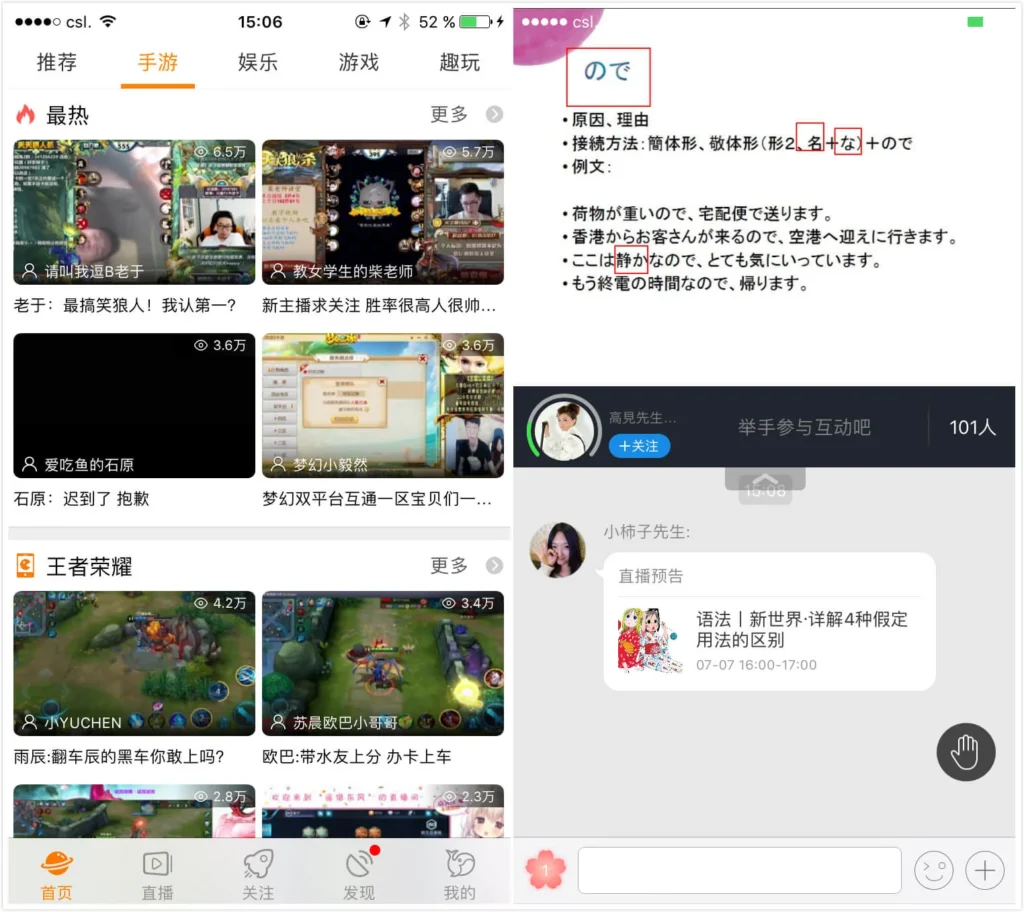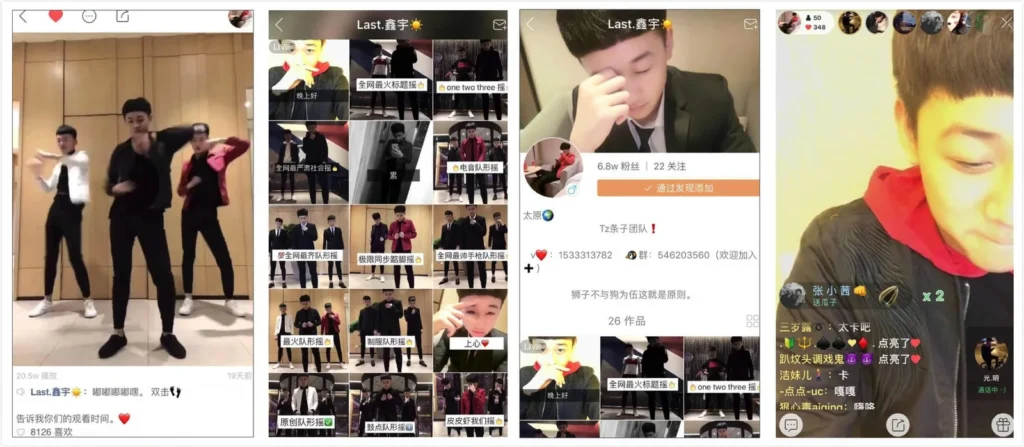CONTENT

By: Ashley Dudarenok
Updated:
Starting in 2016, live streaming in China has been making headlines in mobile Internet news. Its breakthrough in the booming mobile internet sector is because it offers smartphone users a new, more exciting and more immediate communication approach.
Video can be streamed live using a multitude of mobile apps in addition to several traditional internet-based broadcasting outlets. Mobile live streaming apps focus on content creation and distribution while offering users a community for discussion and sharing. Comprehensive platforms also accommodate diverse modes of interaction such as instant messaging, virtual gifts and real-time conversation.
In this article, we have summarized the marketing prospects of live streaming based on some data reports released recently:
In recent years, live streaming in China has witnessed a prominent leap in the number of platforms focusing on various industries such as entertainment, video games, sports, education, finance and more. Generally, these platforms can be divided into two categories.
Pan-entertainment platforms present content that spans a range of areas and topics and a broad range of formats and presentation styles. Some of these platforms also specialize in user generated content with a lot of videos featuring daily life topics, singing, make-up tutorials and more.
This appeals to those who prefer videos that emphasize self-expression and self-presentation and who prefer relatable live video content. Yizhibo, Inke and Huajiao are pan-entertainment platforms.
According to a report released in April 2017 by Analysys, an online data consultancy, pan-entertainment live streaming apps account for 44.5% of platforms.

↑Yizhibo, Inke and Huajiao are pan-entertainment platforms where various types of content can be viewed.
By contrast, vertical live streaming apps focus on one area or topic and are often dominated by PGC (Professionally Generated Content). These platforms often focus on areas like video-games, finance and economics, sports, education, etc.
Vertical live streaming easily targets viewers with specific interests. Of these, DouyuTV and PandaTV focus on video games while platforms such as CCtalk focus on education.

↑Douyu is a gaming live streaming platform (left), while CCtalk is an education platform where there are teachers giving lessons online (right).
Appealing content is always the key factor. In light of a survey conducted by Penguin Intelligence, a Tencent-affiliated Internet data consultancy, over half of live streaming app users are likely to stop using an app if the content isn’t engaging or insightful enough.
Live video content also tends to be more specialty-driven with a greater focus on interactivity.
Constantly improving mobile technology has endowed live streaming with more functions. The “real-time connections” (连麦), one of the most popular functions, provides audiences with a chance to have a Facetime-like interaction with the broadcasters during live streaming. VR (Virtual Reality) or AR (Augmented Reality) can even be combined for more use as well as user-experience optimization.
Statistics provided by Tencent Cloud reveal that live streaming apps that enable real-time connections have three times more viewers than those that don’t. Greater interactivity can prominently enhance content credibility and empower users thereby maintaining or enlarging user bases.
As an example of this, the “Live Connection Challenge” (#连麦挑战#) was a live streaming charity campaign launched by Hongdou Live (红豆Live) and Weibo Public Welfare (微公益). Several celebrities and KOLs were invited to host broadcasts while viewers could pay to connect with them live. Campaign income was donated to the Audiology Development Foundation of China which aims to raise money to help more deaf, hearing and language rehabilitation.
As one of the invited celebrities, Dimash, a popular Kazakh singer, definitely made a huge breakthrough in terms of audience expansion as well as active “real-time connections” participation.

↑It’s a common practice in live streaming in China that the host connects with the audience and talks to them directly. For example, Dimash talked with connected viewers on Hongdou Live. It’s like a mutual phone call, but the conversation was made public and all the viewers could listen to.
According to a report from iResearch, a leading provider of online audience measurement and consumer insights, we get to know what the viewers are like:
A survey by Analysys reveals a general increase in the number of monthly active viewers in the live streaming industry in 2016. Despite several declines caused by policy adjustments, live streaming in China still has a considerable user base. Questmobile, another mobile big data provider, shows that the last two years saw a threefold growth in time spent on live streaming apps.
However, the monthly time spent on these apps decreased from a peak of 203 minutes in the second half of 2016 to 182 minutes at the beginning of 2017. As for user interest in live streaming, it underwent a slight decline during the Spring Festival in 2017 but has been on the rise afterwards.
Live streaming functions as a newborn powerful marketing tool.
Live video can accommodate product sales, product seeding, product reviews and so forth at an extremely low cost. Brand messages can gain boarder exposure, especially brands targeting young customers. Sophisticated, well-prepared content can easily find followers.
Interactive functions like instant messaging, the “real-time connections (连麦)”, VR or AR, gives an immediacy to screen-based interactions that approaches that of an in-person interactions. Intended customers can get answers to pressing questions and gain a more comprehensive impression of products, making promotional activities more convincing and effective.
KOL engagement is very effective for live stream marketing as they bring a ready-made audience and public credibility. Product reviews, product seeding or brand recommendations can be embedded in live videos hosted by KOLs to increase exposure and brand recognition.

↑Celebrities and KOLs who’ve participated in live streaming campaigns include the actress Dilraba Dilmurat and Lu Ting, a member of the idol girl group, SNH48.
What’s more, not only social media platforms do broadcasters usually run, they also have other social media accounts like Weibo or WeChat. According to Penguin Intelligence, slightly more than 20% of live video viewers prefer to following their favorite broadcasters on Weibo, WeChat and other social media channels, in order to get more about their latest information.
Obviously, live streaming can convert traffic to other social media site, so it’s a great opportunity for brands to post some product or service-related content on their social media accounts like Weibo or WeChat after doing live streaming, in order to realize further brand promotion.
Live streaming in combination with other functions is a continuing trend that serves marketing and promotional functions and is becoming a tool fueling content creation.
The “Live streaming + e-commerce” mode is flourishing. As an example, a live streaming channel is embedded in the Mogujie (蘑菇街) app, a famous e-commerce platform for women’s fashion, and its stores that sell by live streaming have witnessed a 236% rise in customer retention within 30 days. E-commerce platforms such as Mogujie and JD.com (京东) embed links to their shopping interface in their live streams so viewers can purchase items while they watch.

↑Live streaming + e-commerce on Mogujie

↑Live streaming + e-commerce on JD.com
According to a survey by Penguin Intelligence, 41% of live stream viewers have watched an e-commerce live stream. Selling with live streaming can deliver an immense amount of product information in a short time, shorten the customers’ decision-making path and invoke impulse buys.
The primary disadvantage of live streams is their length.
In addition, a live stream broadcasters’ ability to improvise is paramount given the inability to edit out mistakes, technical difficulties or interruptions. Increasingly, live video streams will be re-edited to into short videos of higher quality to facilitate a wider spread of the most interesting content from the live stream and a complementary relationship will build between live streaming and short videos.
Short video-oriented apps Meipai and Kwai have embedded live streaming functions so that short video publishers could better interact with the audience, maintain follower base and increase its credibility.
Xinyu (鑫宇), a young dancer, saw an overwhelming follower increase after he published his dance videos on Kwai. With 68,000 followers, he began to live stream regularly, interacting with both his existing and potential followers, further enhancing his viewer base.

↑Xinyu posts dance videos and does live streaming on Kwai.
Live streaming-oriented apps like Inke or Huajiao focus more on short videos from live streams. Video creators tend to use well-edited short videos to consolidate their follower bases. Short videos created by editing small parts of live streams allow for a second exposure and a more extensive spread of the content.

↑Live streaming on Inke
Some new interactive technologies, such as virtual reality headsets and augmented reality animation, can now be integrated into live streaming so as to refine the user experience.
For the tourism industry, live streams broadcast in 3D and viewed with a VR headset provide viewers with an immersive experience, as if the viewer is sightseeing in their intended destination. In these cases, the viewer is not in a virtual or animated world. Instead, they have a real world, live, 3D viewing experience that employs a virtual reality headset and app for viewing.
Live sports broadcasting is where this kind of technology is being pioneered at the moment. For example, NextVR, a leader in broadcasting live events in 3D, has live streamed soccer matches in cooperation with the International Champions Cup (ICC), which have made a big sensation. However, due to the necessity of VR headsets for viewing, there’s still some way to go before mass adoption is a reality.


Live streaming in China will increasingly depend on hybrid modes in order to expand its uses in industries such as e-commerce, education, medicine, finance and others. It will also take time for it to be upgraded to the level of a professional business tool but it’s a natural direction as live video content lends itself to industry-oriented content.
The government is likely to impose more rules and regulations and increase supervision of the live streaming industry. In this case, some smaller live streaming platforms with lower quality content are likely to fall by the wayside. Current regulations and include the following:
The success of live streaming marketing belongs to brands that drop the corporate veil, embrace live streaming-based human-to-human connection, and actively make the most of “live streaming +” to enrich the customer experience as well as convert traffic. Beyond doubt, live streaming in China is making a great figure in marketing.
What do you think about the prospects of live streaming in China? Do you think it will reach new heights or witness declines in the future? Leave a comment below. We’re happy to answer your questions.
To get deeper insights into Chinese social media marketing and utilizing it to serve your business, join ChoZan, a training and resources platform for Chinese social media marketers.
Please follow our official WeChat account to get more updates about the latest news, feature updates and case studies.

Share this article on your favourite social media
By subscribing to Ashley Dudarenok’s China Newsletter, you’ll join a global community of professionals who rely on her insights to navigate the complexities of China’s dynamic market.
Don’t miss out—subscribe today and start learning for China and from China!

A List of 14 Major MCNs in China


Top Online B2B Chinese Channels
Ashley Dudarenok is a leading expert on China’s digital economy, a serial entrepreneur, and the author of 11 books on digital China. Recognized by Thinkers50 as a “Guru on fast-evolving trends in China” and named one of the world’s top 30 internet marketers by Global Gurus, Ashley is a trailblazer in helping global businesses navigate and succeed in one of the world’s most dynamic markets.
She is the founder of ChoZan 超赞, a consultancy specializing in China research and digital transformation, and Alarice, a digital marketing agency that helps international brands grow in China. Through research, consulting, and bespoke learning expeditions, Ashley and her team empower the world’s top companies to learn from China’s unparalleled innovation and apply these insights to their global strategies.
A sought-after keynote speaker, Ashley has delivered tailored presentations on customer centricity, the future of retail, and technology-driven transformation for leading brands like Coca-Cola, Disney, and 3M. Her expertise has been featured in major media outlets, including the BBC, Forbes, Bloomberg, and SCMP, making her one of the most recognized voices on China’s digital landscape.
With over 500,000 followers across platforms like LinkedIn and YouTube, Ashley shares daily insights into China’s cutting-edge consumer trends and digital innovation, inspiring professionals worldwide to think bigger, adapt faster, and innovate smarter.
Please check your email and confirm your subscription.

Please check your email and confirm your subscription.

Please check your email and confirm your subscription.